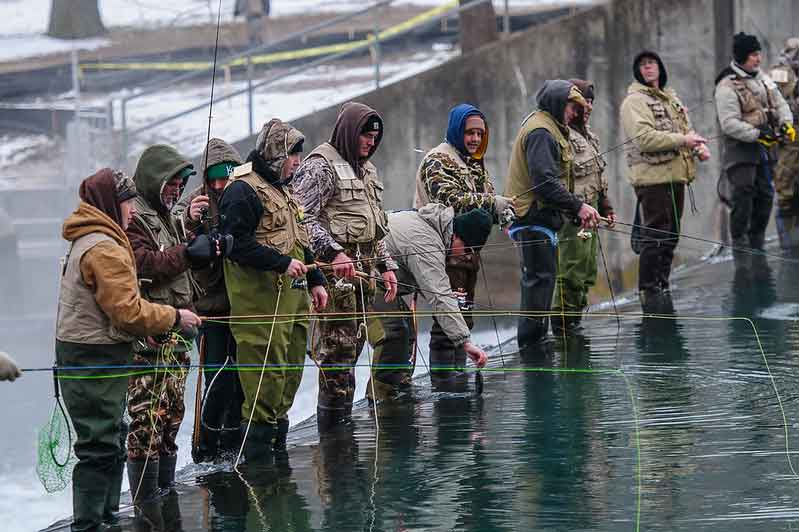Trout Fishing in Missouri: A Comprehensive Guide to the Show-Me State’s Top Spots
Welcome, fellow anglers! If you’re reading this, you’re likely as passionate about trout fishing as I am. Today, I’m thrilled to share my insider knowledge on trout fishing in Missouri, one of the nation’s top destinations for this popular outdoor pursuit. So, grab your tackle box, and let’s dive in!
Missouri’s Trout Fishing Gems: Top Locations to Cast Your Line
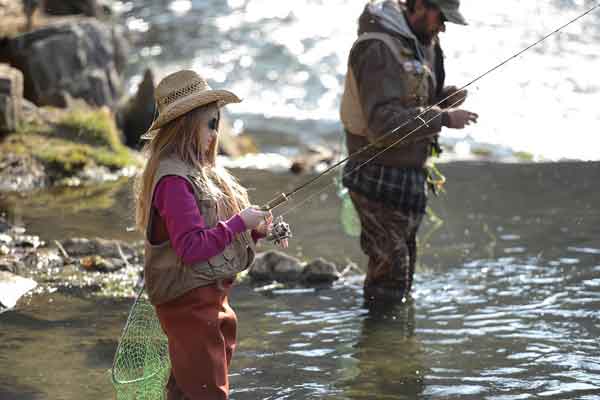
Bennett Spring State Park: The Ultimate Trout Fishing Destination
Nestled in the scenic Ozark hills, Bennett Spring State Park is a true gem for trout fishing enthusiasts. With its abundant aquatic life and well-maintained facilities, it’s no wonder that this park attracts thousands of anglers each year. Let’s delve deeper into what makes Bennett Spring State Park a must-visit location for trout fishing in Missouri.
A Brief History of Bennett Spring State Park
- Established in 1923, Bennett Spring State Park has a rich history that dates back to the early 19th century when settlers first discovered the spring. The park’s namesake, Bennett Spring, was named after Peter Bennett, one of the area’s first settlers. Over the years, the park has been developed and improved to accommodate the growing number of visitors while maintaining its natural beauty.
The Spring: A Trout Angler’s Dream
- Bennett Spring, the third largest spring in Missouri, is the heart of this state park. Pumping out an impressive 100 million gallons of water daily, the spring creates a pristine environment that supports a thriving population of rainbow trout. The park’s hatchery, managed by the Missouri Department of Conservation, ensures the waters are regularly stocked, giving anglers an excellent chance of catching their limit.
Fishing Zones and Amenities
Bennett Spring State Park offers four distinct fishing zones, each with its own unique features and regulations. These zones are:
- Zone 1: Stretching from the spring to the main dam, Zone 1 is a popular spot for fly fishing. Artificial lures and flies are the only types of bait allowed here.
- Zone 2: Located below the dam, Zone 2 offers a more relaxed fishing experience. Both artificial and natural baits are permitted, making it an ideal spot for families and casual anglers.
- Zone 3: Spanning from the lower end of Zone 2 to the park boundary, Zone 3 is perfect for those who prefer a quieter, more secluded fishing experience. All types of bait are allowed in this area.
- Zone 4: This area, known as the Niangua River, offers excellent opportunities for both wade and float fishing. Anglers can use any type of bait to catch trout, smallmouth bass, and other native fish species.
In addition to the various fishing zones, Bennett Spring State Park offers a range of amenities, including a well-stocked tackle shop, comfortable lodging options, and guided fishing services. There are also picnic areas, hiking trails, and a nature center for visitors to enjoy when they’re not casting their lines.
Bennett Spring State Park is truly a trout fishing paradise in Missouri. With its abundant trout population, diverse fishing zones, and excellent facilities, it’s a location that should be on every angler’s bucket list. So, pack up your fishing gear and embark on an unforgettable adventure at this premier trout fishing destination!
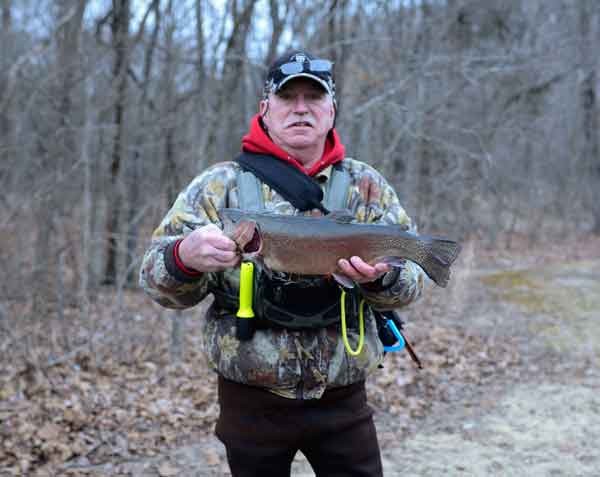
Montauk State Park: An Angler’s Oasis Amidst the Ozarks
Tucked away in the stunning Ozark Mountains, Montauk State Park offers a unique and unforgettable trout fishing experience. With its crystal-clear streams, diverse fishing zones, and picturesque surroundings, this park is sure to captivate the hearts of anglers and nature enthusiasts alike. Let’s explore the highlights and features of Montauk State Park that make it a must-visit destination for trout fishing in Missouri.
Montauk State Park: A Rich History and Bountiful Nature
- Established in 1926, Montauk State Park has a long and storied history. Once home to the Osage Native American tribe and later, European settlers, the park was named after the Montauk Mill, a gristmill built along the banks of the Current River in the 1890s. Today, the park remains a vibrant testament to the area’s natural beauty and cultural heritage.
A Trout Angler’s Paradise: The Current River and Spring Branch
- Montauk State Park is renowned for its pristine waters, which provide an ideal habitat for rainbow and brown trout. The park’s two primary trout fishing locations are the Current River and Spring Branch. The cold, clear waters of the Current River are fed by Montauk Spring, which pumps out over 43 million gallons of water daily.
- Spring Branch, a tributary of the Current River, runs through the park and offers some of the finest trout fishing opportunities in the state. Both waterways are regularly stocked by the park’s hatchery, ensuring a healthy population of trout for anglers to pursue.
Fishing Zones and Regulations
Montauk State Park features three designated fishing zones, each with specific regulations to cater to different angling preferences:
- Zone 1: This area stretches from Montauk Spring to the CCC (Civilian Conservation Corps) Spillway. In this zone, anglers can only use artificial lures and flies, making it popular among fly fishermen.
- Zone 2: Extending from the CCC Spillway to the lower boundary of the park, Zone 2 allows both artificial and natural baits. This versatile zone is ideal for anglers seeking a more relaxed fishing experience.
- Zone 3: The park’s catch-and-release area, Zone 3 is perfect for those who enjoy the challenge of trout fishing without taking their catch home. In this zone, anglers must use artificial lures and flies with a single, barbless hook.
Anglers should be aware of the park’s daily catch limits, size restrictions, and licensing requirements to ensure a responsible and enjoyable fishing experience.
Montauk State Park Amenities and Activities
In addition to world-class trout fishing, Montauk State Park offers a wide range of amenities and activities for visitors to enjoy. The park features a well-equipped store with fishing gear and supplies, as well as a spacious campground, cabins, and a dining lodge. For those seeking adventure off the water, the park also offers hiking trails, wildlife viewing opportunities, and historical sites to explore.
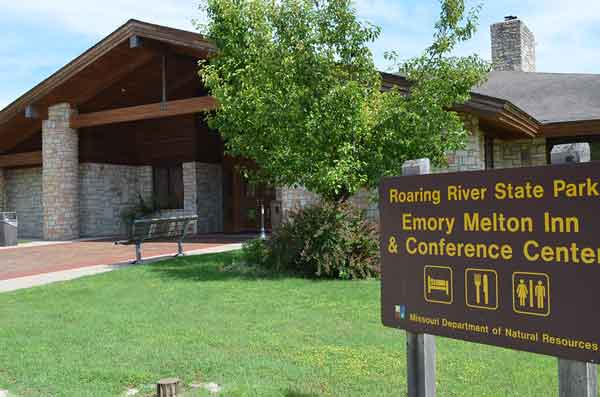
Roaring River State Park: A Scenic Wonderland for Trout Fishing Enthusiasts
Situated amidst the lush, rolling hills of the Ozarks, Roaring River State Park is a picturesque destination for trout fishing aficionados. With its fast-flowing waters, abundant trout population, and diverse fishing zones, this park offers a challenging yet rewarding experience for anglers of all skill levels. Let’s dive into the wonders of Roaring River State Park and discover why it’s a top choice for trout fishing in Missouri.
Roaring River State Park: A Natural and Historic Treasure
- Established in 1928, Roaring River State Park boasts a rich history that dates back to the late 19th century, when the Ozark country began to gain popularity as a resort destination. The park is named after the Roaring River, a breathtaking waterway that cascades through deep, rocky canyons and lush forests. Today, the park preserves this remarkable natural landscape, offering visitors a serene and inspiring getaway.
A Thriving Trout Fishery: The Roaring River
- The centerpiece of Roaring River State Park is its namesake river, which is fed by a massive spring that pumps out over 20 million gallons of water daily. This cold, clear water provides an ideal habitat for rainbow trout, which are raised and stocked regularly by the park’s hatchery. The Roaring River’s fast currents and diverse fishing zones make it an exciting and challenging destination for anglers seeking a truly unique trout fishing experience.
Fishing Zones and Regulations
Roaring River State Park features three designated fishing zones, each with its own specific rules and regulations:
- Zone 1: Extending from the spring to the old dam, Zone 1 is a haven for fly fishing enthusiasts. In this area, anglers are only permitted to use artificial lures and flies.
- Zone 2: Spanning from the old dam to the Social Hole, Zone 2 offers a more relaxed trout fishing experience, with both artificial and natural baits allowed.
- Zone 3: This zone, which runs from the Social Hole to the park boundary, is a catch-and-release area. Anglers can use artificial lures and flies with a single, barbless hook and must release any trout caught immediately.
To ensure a responsible and enjoyable fishing experience, anglers should familiarize themselves with the park’s daily catch limits, size restrictions, and licensing requirements.
Amenities and Activities at Roaring River State Park
Beyond its superb trout fishing opportunities, Roaring River State Park offers an array of amenities and activities for visitors to enjoy. The park features a well-stocked store with fishing gear and supplies, as well as comfortable lodging options, including cabins and a campground. For those interested in exploring the park’s stunning landscape, there are several hiking trails, picnic areas, and a nature center.
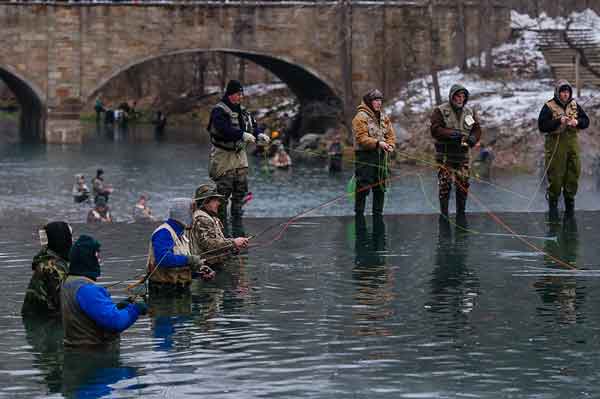
Expert Tips for Trout Fishing Success in Missouri: Unlock the Secrets to a Trophy Catch
Trout fishing in Missouri is an exciting and rewarding experience, but knowing a few expert tips can make all the difference between an average day on the water and a truly memorable outing. Let’s explore some insider secrets and proven strategies to maximize your success when trout fishing in the Show-Me State.
1. Choose the Right Time and Season
Missouri’s trout fishing season generally runs from March through October, but certain times of the year can be more productive than others. Spring and fall are typically the best seasons for trout fishing, as water temperatures are cooler and fish are more active. Additionally, consider fishing early in the morning or late in the afternoon, when trout are more likely to be feeding.
2. Learn About Local Regulations and Licensing Requirements
Before hitting the water, make sure you’re familiar with Missouri’s trout fishing regulations, including catch limits, size restrictions, and licensing requirements. Some parks may also have designated fishing zones with specific bait and tackle restrictions. Following these rules not only ensures a responsible fishing experience but also helps protect Missouri’s trout population for future generations to enjoy.
3. Select the Proper Gear
Investing in the right gear can significantly impact your trout fishing success. A lightweight, medium-action rod and reel combo is ideal for most Missouri trout fishing situations. For line, consider using 4-6 pound test fluorocarbon or monofilament, which is less visible to trout and provides better sensitivity for detecting bites.
4. Choose the Right Bait or Lure
Trout can be caught using a variety of baits and lures, but knowing what works best in specific conditions can give you an edge. Live bait, such as worms, minnows, or crayfish, is always effective. If artificial lures are your preference, try spinners, spoons, or small crankbaits that mimic the natural prey of trout. Fly fishermen can find success with nymphs, streamers, and dry flies that match local insect hatches.
5. Study the Water and Identify Prime Trout Habitat
Understanding the behavior and preferred habitat of trout is crucial for locating fish. Trout often seek out areas with cooler water, cover from predators, and access to food. Look for deep pools, undercut banks, submerged logs, or areas with fast-moving water that provide oxygen and dislodge insects for trout to feed on.
6. Hone Your Technique and Presentation
Trout can be finicky, so varying your retrieval speed, depth, and presentation can make all the difference. Experiment with different casting techniques and angles to cover more water and attract the attention of nearby trout. Additionally, maintaining a natural, stealthy approach by avoiding sudden movements and wearing clothing that blends in with your surroundings can help prevent spooking fish.
7. Observe and Adapt
Successful trout fishing often comes down to observation and adaptability. Pay attention to local conditions, such as water temperature, clarity, and insect activity. Be prepared to adjust your tactics based on what you observe, and don’t be afraid to switch up your bait or lure selection if what you’re using isn’t producing results.
By following these expert tips and refining your skills, you’ll be well on your way to trout fishing success in Missouri’s beautiful parks and waterways. Happy angling!
Connect With Fellow Anglers: Share Your Trout Fishing Adventures
I hope this guide has inspired you to explore the wonders of trout fishing in Missouri. But, I’d also love to hear about your own experiences! So, please feel free to leave a comment below sharing your favorite Missouri trout fishing spots, tips, or stories. Together, let’s create a community of passionate anglers who celebrate the joys of trout fishing in the Show-Me State.
Happy fishing, friends!

